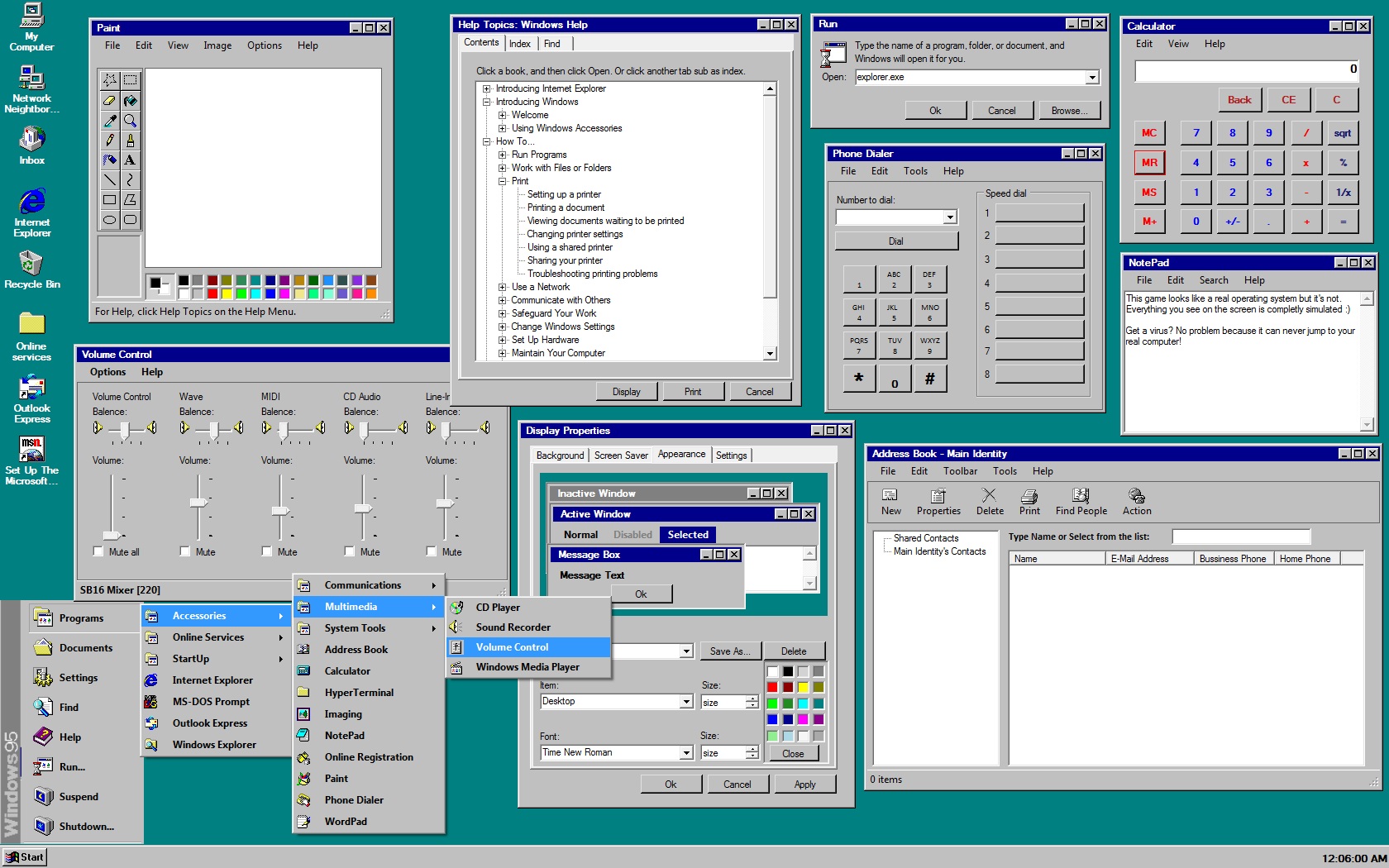24 Games Windows 95

24 Games for Windows 95 by Stirling Technologies, Inc. Versions: 2.1. File name: UNINST16.EXE. Original title: How to play windows 95 games on windows 7. I think I have the 64 bit version. I already tried the troubleshooter for old programs but nothing will open. Dec 27, 2013 I want to get '24 games for Windows 95. Download Captureperfect 3.0 Canon Scanner. ' Where can I download / buy it? I had used it at my home old PC and would like to try it now. If somebody knows. Aug 29, 2008 24 Games Arcade Hamid Kaashif. DO YOU REMEMBER?- Windows 95 Games 2- Chip's Challenge - Duration: 7:40.

Windows 95 desktop, showing its icons and Source model August 15, 1995; 22 years ago ( 1995-08-15) August 24, 1995; 22 years ago ( 1995-08-24) OEM Service Release 2.5 (4.0.950 C) / November 26, 1997; 20 years ago ( 1997-11-26) Platforms type Preceded by (1992) Succeeded by (1998) Official website Support status Mainstream support ended on December 31, 2000 Extended support ended on December 31, 2001 Windows 95 (codenamed ) is a consumer-oriented developed. It was released on August 24, 1995. Windows 95 merged Microsoft's formerly separate and products. It featured significant improvements over its predecessor,, most notably in the (GUI) and in its simplified ' features. There were also major changes made to the core components of the operating system, such as moving from a mainly architecture to a architecture. Accompanied by an extensive marketing campaign, Windows 95 introduced numerous functions and features that were featured in later Windows versions, such as the taskbar, the 'Start' button and the way the user navigates. Three years after its introduction, Windows 95 was succeeded.
Microsoft ended support for Windows 95 on December 31, 2001. This section needs additional citations for.
Unsourced material may be challenged and removed. Keygen N-track Studio 6. (April 2010) () The initial design and planning of Windows 95 can be traced back to around March 1992, just after the release of. At this time, Windows for Workgroups 3.11 and were still in development and Microsoft's plan for the future was focused on. Cairo would be Microsoft's next-generation operating system based on Windows NT and featuring a new user interface and an object-based file system, but it was not planned to be shipped before 1994. However, Cairo would partially ship in July 1996 in the form of, but without the object-based file system, which would later evolve into.
Simultaneously with Windows 3.1's release, started shipping. Microsoft realized they were in need of an updated version of Windows that could support 32-bit applications and preemptive multitasking, but could still run on low-end hardware (Windows NT did not). So the development of Windows 'Chicago' was started and, as it was planned for a late 1993 release, became known as Windows 93.
Initially, the decision was made not to include a new user interface, as this was planned for Cairo, and only focus on making installation, configuration, and networking easier. Windows 93 would ship together with MS-DOS 7.0, offering a more integrated experience to the user and making it pointless for other companies to create DOS clones. MS-DOS 7.0 was in development at that time under the code name 'Jaguar' and could optionally run on top of a Windows 3.1-based 32-bit protected mode kernel called 'Cougar' in order to better compete with. The first version of Chicago's feature specification was finished on September 30, 1992.